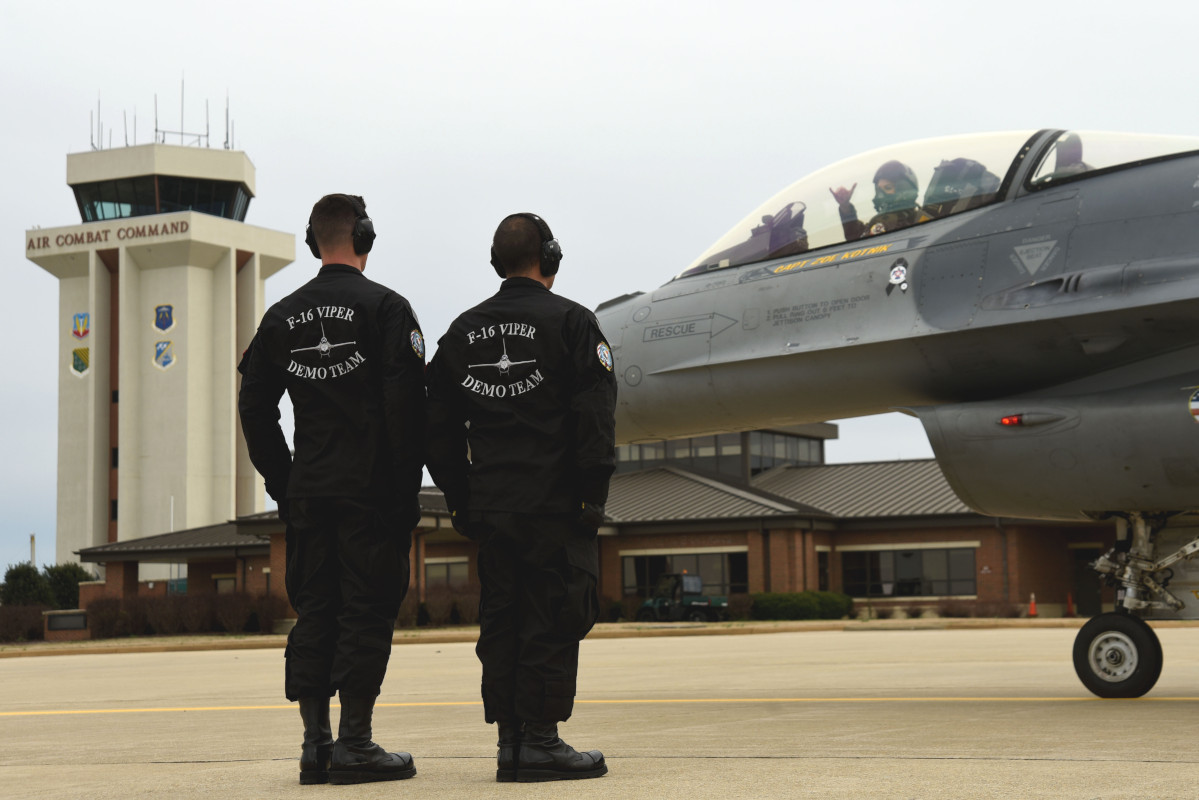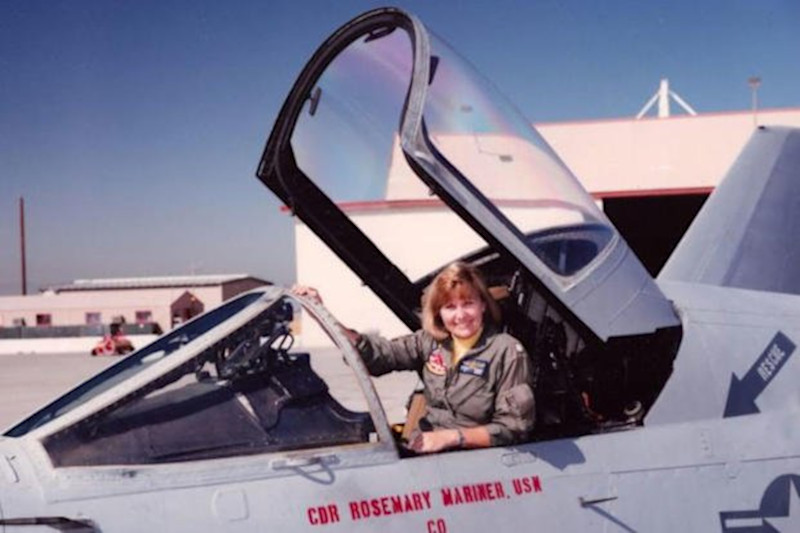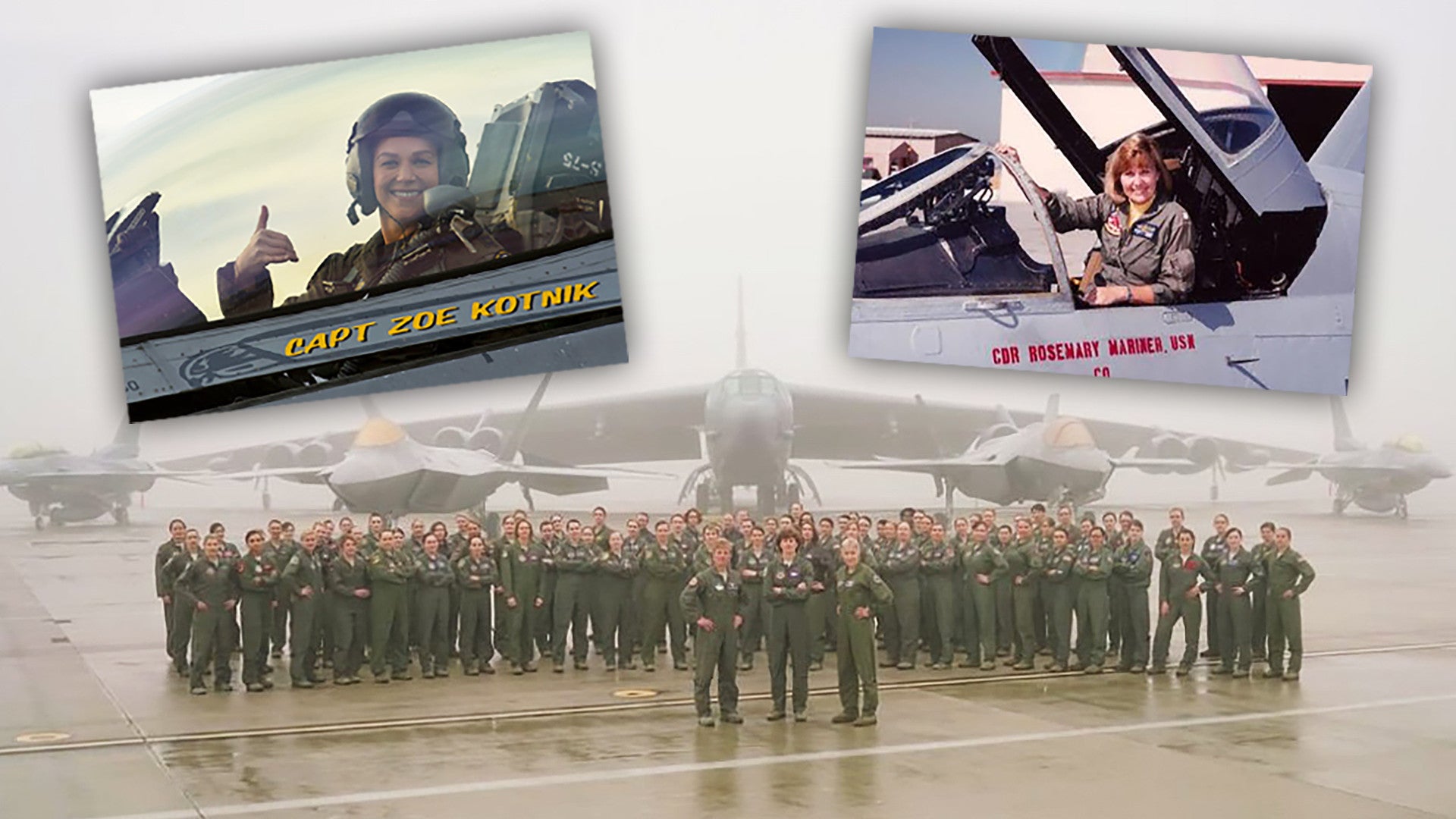Women’s History Month may be March, but January 2019 proved to be particularly significant for U.S. military female aviators. This week, the U.S. Air Force announced that Captain Zoe “SiS” Kotnik had become the service’s first-ever single-ship aerial demonstration pilot. Just days earlier, retired U.S. Navy Captain Rosemary Mariner, who had numerous ground-breaking achievements in her 24-year career, sadly passed on after a battle with ovarian cancer. Now, a group of female naval aviators is preparing to fly a “missing woman” formation for her memorial service tomorrow.
U.S. Air Force General Mike Holmes, head of Air Combat Command, the service’s main warfighting command, certified Captain Kotnik as the commander of the F-16 Viper Demonstration Team, or VPT, on Jan. 29, 2019. In that position, She will also be the team’s lone F-16 display pilot for 2019, flying at various air shows across the United States and Canada.
Leading the small VPT, which includes eight other personnel to support the performances, is a major honor and accomplishment for any pilot. Kotnik now holds the additional distinction of being the first woman to ever lead any of the Air Force’s demonstration teams.

“What I’m looking forward to most is the potential to have an influence on younger generations,” Kotnik, who graduated from the Air Force Academy in 2011, said in an official statement. “I know firsthand how impactful airshows can be and what a difference it makes to young people to see just one example of what they too can do and who they can become. I hope to be a source of inspiration and motivation they can draw from to apply in their own lives.”
Kotnik had to go through four certifications in total before receiving the final approval from General Holmes to lead the team. This process included a variety of specialized training flights, including sorties in the backseat while another pilot demonstrated the various aerobatic maneuvers, as well as 30 practice performances.
The VPT’s routine is very different from the kind of flying Kotnik has been doing for the past eight years, most recently with the 55th Fighter Squadron at Shaw Air Force Base in South Carolina, but she already has some experience with aerial performances, having participated in the flyover of the nation’s capital for President Donald Trump’s inauguration in January 2017.
She also has deep ties to air shows and aerobatics. Her uncle is noted air show performer Charlie Hillard, the first American to ever win a world aerobatics title. Kotnik says that it was her experiences with him, as well as with her mother who was a private pilot, and at airshows that pushed her to join the Air Force, according to an interview with LiveAirShowTV, which you can watch in full below.

“There’s a larger community of female fighter pilots nowadays and it’s awesome. It’s a community within itself basically,” then-U.S. Air Force Lieutenant Kotnik said in an earlier interview in 2017. “It’s awesome because you have someone who set the precedent and someone that I can follow in their footsteps and ask questions and learn from them. So, I feel very fortunate that there have been several [female fighter pilots] before me.”

In that case, Kotnik was speaking about trailblazing women in the Air Force, and the preceding U.S. Army Air Forces, specifically. This includes Jacqueline Cochran and Nancy Love, who were foundational members of the World War II-era Women’s Auxiliary Army Corps (WAAC) andWomen Airforce Service Pilots (WASP), as well as the Air Force’s first female fighter pilot, Brigadier General Jeannie Leavitt, who is presently the head of the Air Force Recruiting Service.
On Feb. 1, 2019, the AFRS, under Leavitt’s command, gathered 80 female pilots together for a day at Edwards Air Force Base in California, one of the Air Force’s premier research and development facilities, to share their stories about serving. It seems likely we’ll be hearing more about their experiences specifically as we get closer to Women’s History Month.
But January 2019 offered another, more somber opportunity to reflect on the trailblazing careers of female aviators across U.S. military, in general. Retired U.S. Navy Captain Rosemary Mariner, who passed away on Jan. 24, 2019, had been one the first eight female pilots in her service to fly jets, beginning with the A-4C Skyhawk in 1974 and then moving on to the A-7E Corsair II, according to her obituary.
She was eventually sent to Air Test and Evaluation Squadron Five (VX-5), the Vampires, at Naval Air Weapons Station China Lake. In 1982, the Navy assigned Mariner to the aircraft carrier USS Lexington as a surface warfare officer.
“In modern warfare, the emphasis is not on physical strength, but on brain power operating sophisticated weapons systems,” she said in an interview with Glamour magazine that year. “A machine gun is a great equalizer.”
Then, in 1990, she became the first woman in the U.S. military to command a military aviation squadron when she became the commander of he Flashbacks of Tactical Electronic Warfare Squadron Three Four (VAQ-34). This unit, based at the Pacific Missile Test Center at Point Mugu, California, first flew a mix of ERA-3B and EA-7L aircraft, before transitioning to the F/A-18A Hornet. Its primary mission was to simulate various electronic warfare and missile threats against Navy warships during fleet exercises.

Mariner went on to serve on the staff of the Joint Chiefs of Staff at the Pentagon and her final assignment was at the Chairman of the Joint Chief’s Chair in Military Strategy at the National War College in Washington, D.C. She retired in 1997, after which she continued her academic career and remained an advocate for the further integration of women into the U.S. military, working as a policy advisor on those issues for the Navy, as well as news outlets such as ABC News and PBS.
Mariner is set to be laid to rest at New Loyston Cemetery in Maynardville, Tennessee on Feb. 2, 2019. Nine female aviators have since volunteered to fly a “missing woman” formation with one F/A-18E and four F/A-18F Super Hornets from Naval Air Station Oceana, Virginia, some 400 miles away.
“We’re fortunate to be chosen,” U.S. Navy Commander Leslie “Meat” Mintz, the executive officer of Strike Fighter Squadron Two One Three (VFA-213), said in an interview with Military.com. “It’s certainly the first time I’ve done this for a female aviator. Everyone is truly humbled to be a part of it.”
The other naval aviators taking part in the flight are Commander Stacy Uttecht, head of VFA-32, Lieutenant Commander Paige Blok, also from VFA-32, Lieutenant Commander Danielle Thiriot of VFA-106, Lieutenant Commander, presently assigned to NAS Oceana, Lieutenant. Christy Talisse of VFA-211, Lieutenant Amanda Lee of VFA-81, Lieutenant Kelly Harris, VFA-213, and Lieutenant Emily Rixey of the Strike Fighter Weapons School Atlantic.

“It’s truly an honor to do this … for Capt. Mariner,” Mintz told Military.com. “I’ve been in this business for 19 years. I really haven’t thought about male versus female gender issues because it’s strictly merit-based. ‘Can you fly? Can you perform?’ [but] really I owe that to her.”
We here at The War Zone wish Captain Kotnik the best of luck as head of the VPT and say fair skies and tailwinds to Captain Mariner.
Contact the author: jtrevithickpr@gmail.com
